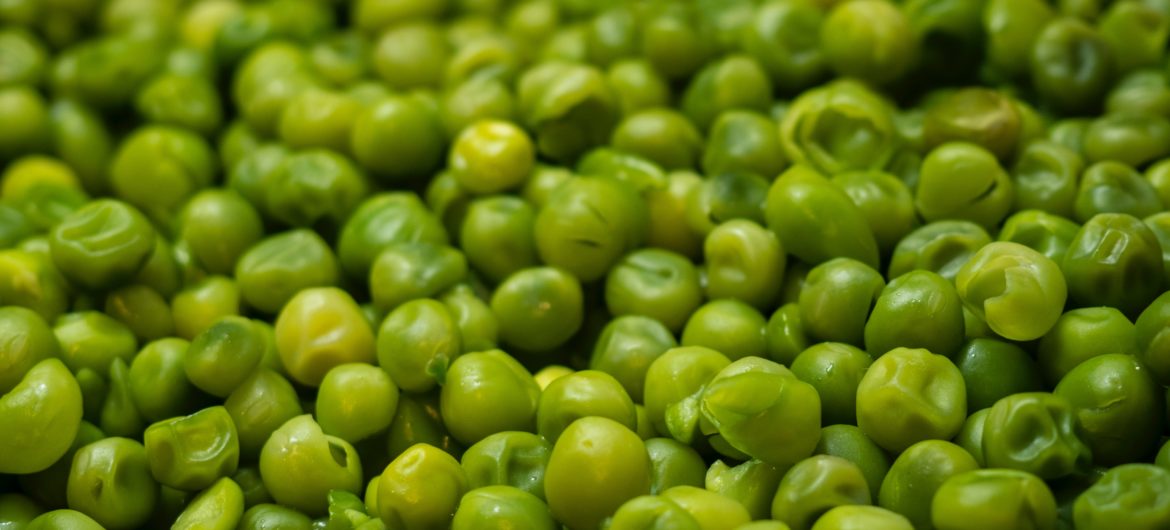A new study claims that a type of pea known as the wrinkled ‘super pea’ may help control blood sugar levels and reduce the risk of type 2 diabetes.
UK researchers have found that the wrinkled peas prevent ‘sugar spikes’ where blood sugar levels rise sharply after a meal – thought to contribute to diabetes.
Incorporating wrinkled peas into meals, either whole or ground into a pea flour, can help tackle the global type 2 diabetes epidemic by preventing these spikes.
Wrinkled peas contain higher amounts of ‘resistant starch’ than regular smooth peas that you’d more commonly find in the supermarket.
View this post on Instagram
Resistant starch takes longer for the body to break down compared with normal starch and ends up being fermented in the large intestine, rather than digested in the small intestine.
Type 2 diabetes is a common condition that causes the level of sugar in the blood to become too high and is often linked with being overweight or inactive.
‘Despite national campaigns to promote healthy eating, type 2 diabetes diagnosis rates continue to rise,’ said study author Dr Katerina Petropoulou at Imperial College London.
‘An alternative dietary strategy to maintain normal blood glucose rates among the population is to improve the composition of commonly consumed foods.
‘There is much evidence that diets rich in a type of carbohydrate called resistant starch have a positive impact on controlling blood glucose levels, and hence reduce susceptibility to type 2 diabetes.’

Picture sourced from Pexels
Starch is a word of Germanic origin related to ‘strengthen’ or ‘stiffen’ and is a form of energy storage in plants.
A starch granule can be as big as a dust particle, depending on its origin, ranging from a single micrometre (or one-millionth of a metre) to 100 micrometres.
Starch is a carbohydrate that the body breaks down to release sugar, but resistant starch is broken down more slowly.
That means sugar from resistant starches is, in turn, released more slowly into the bloodstream, resulting in a more stable increase in blood sugar rather than in a spike.
A high amount of resistant starch is due to the way the starch is made in the cell and the fact that the cells themselves are more resistant to digestion.
For the study, researchers used wrinkled ‘super’ peas with a naturally occurring genetic variant.
This variant produces a greater amount of resistant starch, but a lower overall carbohydrate content.
‘The super pea contains a naturally-occurring variant gene that means they are high in resistant starches,’ said lead study author Professor Gary Frost at Imperial.
‘These starches are not completely digested in the upper parts of the digestive tract and are available for fermentation by bacteria in the colon.’
As the bacteria ferment the starch, they produce compounds called short-chain fatty acids.
These compounds in turn help boost the function of cells that produce insulin, which helps control blood sugar.
In experiments, the team gave healthy volunteers a mixed meal including 50 grams of wrinkled peas and in a series of control, experiments gave them regular ‘smooth’ peas.
Working with the University of Glasgow, researchers also added a tracer molecule to the peas, so that they could trace how they were absorbed and digested by the human gastrointestinal tract.
They repeated the experiments using flour made from either wrinkled peas or control peas.
Compared to eating smooth peas, wrinkled peas prevented ‘sugar spikes’ either when consumed whole or in the form of flour incorporated in a mixed meal, they found.
Flour from their ‘super peas’ could potentially be used in commonly consumed processed foods which, if eaten over the long term, could prevent sugar spikes.
Further tests using a mimic of the human gut showed that the way that the peas were prepared and cooked affected how quickly they were digested.
‘This study has shown us that by preparing these peas in certain ways we can further reduce blood sugar spikes, opening up new possibilities for making healthier foods using controlled food processing techniques,’ said study author Professor Pete Wilde of the Quadram Institute in Norfolk.
Professor Tom Sanders at King’s College London, who wasn’t involved with the study, stressed that obesity and a lack of physical activity are the main preventable causes of type 2 diabetes.
‘In conclusion, adding wrinkled peas or pea flour to other foods is unlikely to have any impact on risk of diabetes,’ he said.
Photo by Sergi Kabrera on Unsplash
‘Furthermore, this study used more peas than are likely to be consumed on a regular basis.’
The study has been published in the journal Nature Food.





